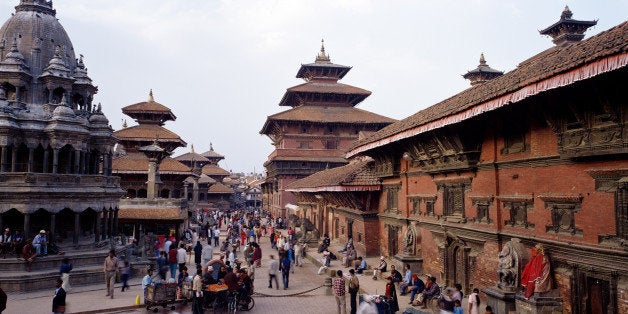
Co-authored by BIKASH PANDEY
Bikash Pandey is Innovations Lead for Clean Energy and Water at Winrock International, and is one of the pioneers of small-scale hydropower development and electric transportation in Nepal.
You wouldn't know it driving around polluted Kathmandu, but Nepal is very much a leader in the fight against climate change. For a poor country struggling with severe poverty, it is more than a little admirable how much Nepal has done already to decarbonize its economy.
Nepal's domestic electricity production is 100 percent hydropower-based and therefore 100 percent renewable. Independent power producers have responded to incentives for small and medium hydro power and have flourished thanks to the willingness of local banks to provide credit. As a result, the country's chronic power shortages and import of coal-generated power from India are both expected to come to an end starting in 2018.
Kathmandu also has a sizable and growing fraction of electric vehicles and motorbikes on its streets--perhaps the highest percentage of any city of earth. Given the increase in population and the growing air quality concerns in the city, this is a welcome development that must continue to spread. Importers of petrol and diesel vehicles actively work to slow adoption of additional EV use in Kathmandu, but the recent blockade of goods crossing the India-Nepal border has impressed on many Nepalis the need to be more independent of petroleum imports, and EV's are seen as one important avenue.
Nepal has also developed an extensive biogas program to fuel rural households cooking needs. Inexpensive biogas systems using livestock waste are a standard feature of rural homes all across Nepal now. Over a hundred companies install the technology and have sold more than 300,000 systems nationwide.
Rural solar programs have also brought electricity for lights to unconnected rural households all across Nepal. These programs serve almost every community in Nepal now with half a million homes sporting a panel on their roofs. The government has recently begun to provide incentives for rooftop solar PV systems in cities adding to already extensive use of solar powered hot water systems by urban residents.
Nepal has also done great things on land use over the last several decades. Its innovative community forest program has massively increased forest cover across Nepal and has improved degraded lands' ability to serve some 20,000 communities' economic needs, protect biodiversity, improve water management, and sequester carbon.
Nepal like many developing nations is eager to receive international support for its climate mitigation and adaptation needs, hoping, like other G77 countries, to have rich nations, who are responsible for the majority of global emissions, pay the bill for energy and climate adaptation. The reality though of rapidly spreading climate impacts and human development needs has encouraged Nepal to move ahead with these programs even without the larger flows of foreign aid it has hoped to receive.
We see similar developments now in other developing countries as well. Climate impacts are here now and these governments are realizing that they must act. Aid and technical assistance are still badly needed and more would be very well used, but Nepal is a great example of a country taking important steps other poor nations can learn from.
Given all this, Nepal would benefit and perhaps even be able to attract additional aid resources and private investment if its progress were more fully known. Its hydropower development, clean transport infrastructure, urban and rural solar programs could all grow at a much faster clip with the help of these investments. Ironically, Nepal could now benefit from its work to date by broadcasting its effectiveness. Donors of all kinds would be encouraged to contribute and invest more given this success.
And lessons from Nepal could potentially be adapted elsewhere. For example African nations, which made enormous commitments to land restoration in Paris last December, might draw lessons from Nepal on how to reforest and restore lands in cooperation with rural communities. Africa's other enormous Paris commitment -- to develop 300 Gigawatts of renewable energy -- could also be informed by the remarkable work Nepal has done to develop hydropower, solar and biogas energy.
Nepal offers an extremely positive example of a poor country moving forward effectively. Donors take note. There are great opportunities to facilitate additional progress and to learn lessons from Nepal. The country needs immediate help to get its infrastructure repaired after the devastating 2015 earthquake, including for its 14 damaged hydropower stations. Nepal government officials might also take note. There are enormous opportunities to be had from lifting the veil from the great progress that has been made in Nepal. Tell the story, assert climate leadership, tout your ratification of the Paris Agreement, and fully leverage resources from donors and investors to continue the great work.
The views expressed here are solely those of the authors and not of their employers